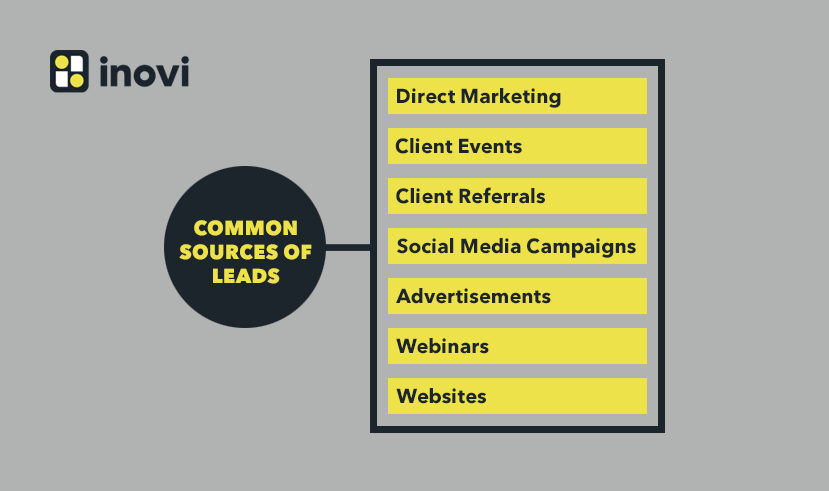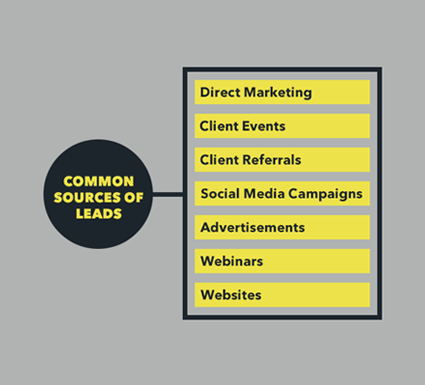What is Lead Management in Salesforce?
Lead management is the backbone of successful sales operations. However, the bigger your company gets, the harder it becomes for them to handle all the leads. In this regard, companies and businesses worldwide use various CRM systems to manage leads properly.

Salesforce is one of them and the #1 CRM system in the world. From managing leads to monitoring sales campaigns and tracking data, it helps users in all aspects.
The following article will cover Salesforce lead management and its features.
What is a Lead?
Your leads are your business development prospects, who you can turn into permanent clients. They may be companies or people showing interest in your service or goods. Your leads may come from different sources, known as lead sources.
Some common sources of leads are:
- Direct Marketing
- Client Events
- Client Referrals
- Social Media Campaigns
- Advertisements
- Webinars
- Websites
What is Lead Management?
The main goal of lead management is to ensure the smooth conversion of a lead into a sale. It also allows your company to streamline its sales process and increase income.
What are the Features of Salesforce Lead Management?
Salesforce has several features that can help you generate leads, manage them well, and turn them into sales. A few of them are as follows:
Lead Capturing
Websites are one of the main ways to collect leads. Using the existing data reduces manual entry, making it easier for potential customers. So, lead collection from the sources becomes better.
Lead Validation
If you can separate convertible prospects from bad leads using business-specific criteria, the Salesforce Lead Validation function allows the sales team to concentrate only on worthy leads.
Lead Assigning
Based on the criteria, this Salesforce tool automatically distributes leads to sales representatives. You can work with it when it automatically assigns leads, saving time and effort.
Lead Scoring
According to your audience’s interest level in the goods and services in your service or products, Salesforce assigns a lead a score. Your sales team can easily find quality leads by identifying the highest to lowest conversion scores.
Lead Nurturing
Lead nurturing allows you to contact your clients automatically through emails and texts, which can convert your leads into sales. Eventually, your company can develop leads and turn them into sales using this automated system.
Conversion of Leads
You can monitor your lead’s progress from prospect to sales with the help of Salesforce’s lead conversion tool. It allows you to evaluate the success of your marketing initiatives.
Customizable Dashboard
You will access all data regarding leads and their status through the dashboard. Besides, you can apply filters to customizable tools to search for particular lead categories.
Lead Management Automation
By automating time-consuming processes like sending follow-up emails, Salesforce Lead Management Automation will boost your company’s productivity and allow it to concentrate on more crucial jobs.
What are the different stages of Salesforce lead management?
Here are a few stages for Salesforce lead management, which are:
1. Attract potential clients
The lead quantity directly relates to the volume of sales. More leads mean more chances for better sales. There are several ways that Salesforce lead management may allow you to generate more leads.
For example, using lead generation systems like Web-to-Lead, LinkedIn integration, and other third-party solutions, Salesforce has many features that can help your company to increase leads.
You can import many lead-related data using the Salesforce data import wizard tool. You can move data from Excel spreadsheets, Gmail, Outlook, and other comparable networks.
2. Recognize Sales Conversions
Businesses have always been concerned with sorting and looking for productive leads. You can easily avoid spending time and resources when you can identify good leads. Setting a constant lead authorization standard is essential for that.
Salesforce has the option for you to define a lead conversion point for the sales funnel. So you can easily direct your leads and convert them into sales.
3. Prioritize leads and provide the right salespeople for them.
Without a doubt, the lead conversion process is a time-sensitive process. A lead will only be converted if you prioritize and work on it promptly. During that time, your competitors can convert the lead before you do.
If you want the sales staff to reply quickly, Salesforce has your back. It will allow you to research the biggest opportunities. It’s a must to follow up on your lead, but you should also know the risks before to avoid going overboard.
4. Convert quality leads into sales.
The key role of lead conversion is to move your prospects to customers. Do a follow-up assignment and ensure that your leads are not left unattended for a long time.
Working according to priorities will also help your sales team to convert quality leads while looking at other leads, and Salesforce lead management can help you with that. It’ll help you to boost the chances of conversion a lot.
5. Develop potential customers who unsure to purchase
This process is very important here. It allows you to create strong connections with leads and detect less important leads for future interest.
Sales professionals should nurture leads, especially when a prospect needs to prepare to get your goods or services. However, lead nurturing requires more than contacting them regularly or sending them monthly emails. Here, Salesforce has got you covered.
You can provide your leads with tips, recommendations, market research, and other relevant material. It will help you solve the problems and also identify your company as a trustworthy partner.
6. Assess lead management status
You have access to a united platform through Salesforce, where you can keep all of your lead management data. You will also receive tools to support the analysis of all this data.
Your team can utilize data analysis to identify the improvements to your lead management process. It is an ongoing process that you may need to repeat often to maintain your sales funnel well.




